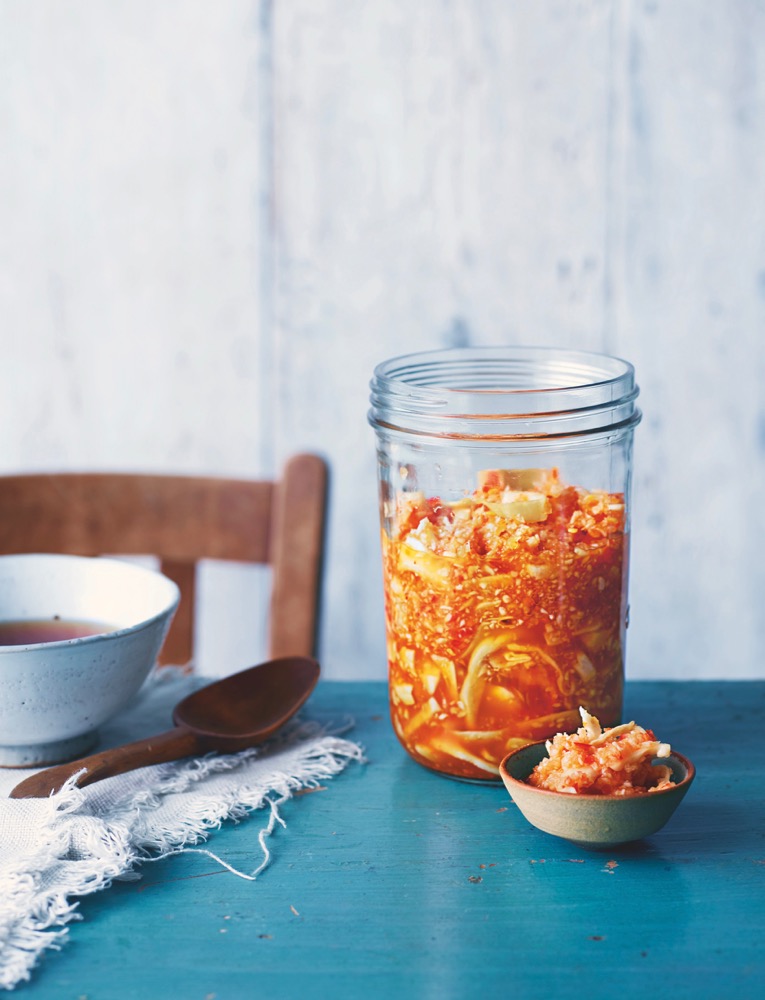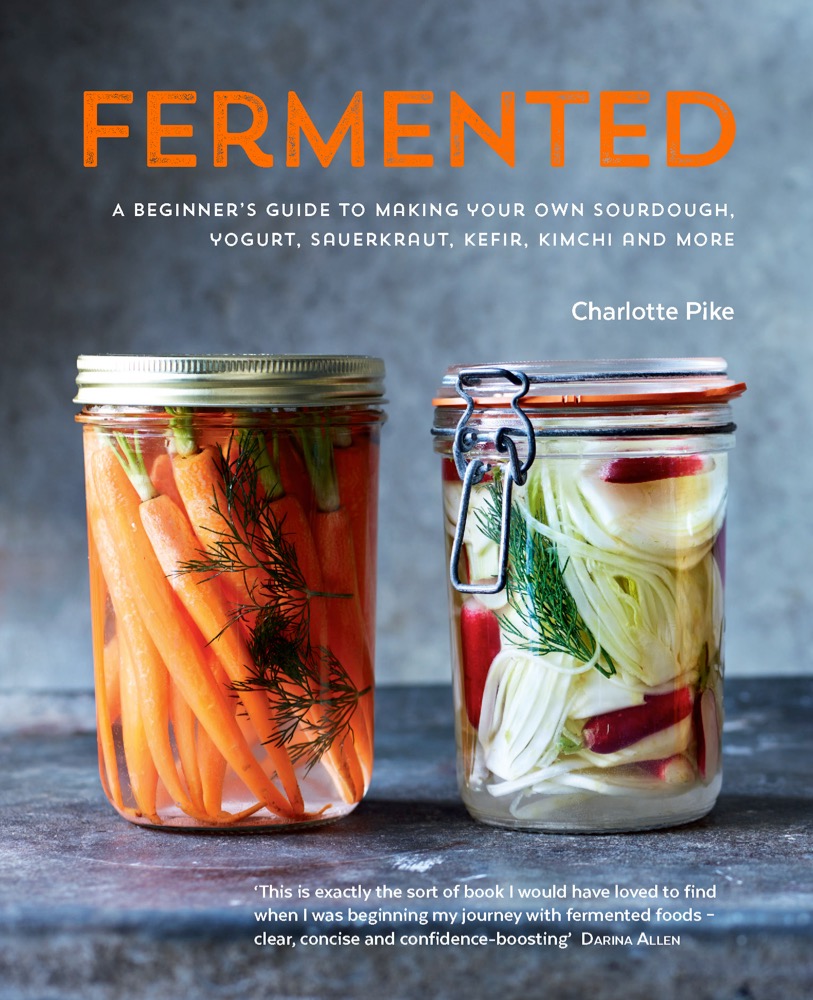Kimchi
From Fermented, a Beginner's Guide To Making Your Own Sourdough, Yogurt, Sauerkraut, Kefis, Kimchi and More by Charlotte Pike
From Fermented: A Beginner's Guide To Making Your Own Sourdough, Yogurt, Sauerkraut, Kefir, Kimchi And More by Charlotte Pike. Photography by Tara Fisher. Published by Kyle Books. ©2015. Published with permission.
- Servings: Makes 1 1/2 quart jar.
From Fermented and author Charlotte Pike:
Kimchi is an essential component of Korean cuisine, as it is served with almost every meal. It is still made in the fall, in a UNESCO-protected process called Kimjang, when families come together to make their own recipes, which are passed down through the generations. With many regional differences in ingredients and methods, making and eating kimchi is a firm part of Korean heritage. My recipe is for a slightly sweet, tangy kimchi with a crunchy texture. I prefer to thinly slice the cabbage, but you could chop it into chunky pieces if you wish. Personally, I like everything cut up quite small.
Ingredients
- 1 3/4 lbs total weight of organic white cabbage, thinly sliced, and Chinese-leaf cabbage, cut into 2 in chunks, using more or less of each, as you prefer
- 1/2 cup fresh ginger, peeled and finely grated
- 6 garlic cloves, peeled and finely chopped
- 1/2 cup fresh red chiles, such as fresno or serenade, thinly sliced (leaving the seeds in)
- 3 organic carrots, peeled and coarsely grated
- 1 bunch of organic scallions, thinly sliced
- 1 2⁄3 cups fish sauce
- 1⁄3 cup palm sugar
- zest and juice of 2 limes
- 3/4 cup filtered water (see below)
- You will need a 1.5-quart glass Le Parfait-style jar with a rubber seal, sterilized according to the instructions noted below.
Directions
- Place the cabbage, Chinese leaf, ginger, garlic, chiles, carrots, and scallions in a large mixing bowl and mix well together with your hands until evenly combined. Transfer the mixture to a 1.5-quart jar.
- Add the fish sauce, sugar, lime zest and juice, and water to a pitcher and stir to dissolve the palm sugar. Pour into the jar, stir well with a wooden spoon or spatula, and press down any vegetables that are poking out of the liquid.
- Close the lid and set aside to ferment on the kitchen countertop for at least a week. When the kimchi is ready it should smell strongly of its component ingredients, but not unpleasant. It won’t change drastically in appearance, but the vegetables will soften a little.
- The kimchi keeps for up to 2 months in a cool, dark place. Once opened, store in the fridge and eat within a month.
Ensure the vegetables are submerged in the brine at all times to inhibit mold from forming on the surface.
A Le Parfait jar has a clip-top and a rubber seal. The City Cook advises that if you can't find jars by Le Parfait, look for ones by Ball that have a two-piece top with a rubber edged inner lid and a screw-on ring.
Filtered Water
Pure water is essential for fermenting. Any chemicals such as chlorine in the water will not allow your food to ferment as it should. If you're on municipal water, never use water straight from the faucet, as the chlorine present in the water supply will inhibit the fermentation process. You can use pure bottled mineral water, or for a more economical and ecological option, pour tap water into a large, wide, shallow bowl and leave it to sit, uncovered, overnight. The chlorine will evaporate and the water will be good to use by the morning.
Filtered tap water is fine to use, but again I recommend you leave it overnight as mentioned above for unfiltered tap water.
Sterilizing Jars
In order to ferment successfully, your equipment must be scrupulously clean. In terms of cleaning and preparing my equipment, I follow the same procedure as I do with preserving; I like to run my containers through the dishwasher on a hot cycle and use them shortly afterward. Hand washing is fine as long as you use dish soap and plenty of hot water and rinse well. You may wish to rinse your equipment and vessels again after removing them from the dishwasher, just in case the detergent hasn’t been removed effectively by the rinse cycle.

